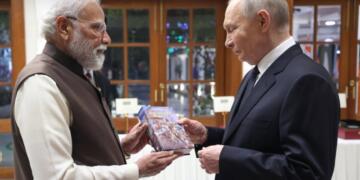In the last few months, GST collections have been very buoyant. The total collection is shooting above Rs 1 Lakh Crore for every month in the ongoing fiscal year. And in most of the months, it has been above Rs 1.3 Lakh Crore, including in February, which is a 28 day month.
In February 2022, GST collection was Rs 1.33 Lakh Crore, which is 18% higher than the same month the previous year and 26% higher than February 2022. The collection every month is registering around double-digit growth, and this gives the government space for rationalization of tax rates on some items such as Automobiles which are heavily taxed.
“February, being a 28-day month, normally witnesses revenues lower than that in January. This high growth during February 2022 should also be seen in the context of partial lockdowns, weekend and night curfews, and various restrictions that were put in place by various states due to the omicron wave, which peaked around 20th January,” Union finance ministry said in a statement on Tuesday.
The full potential of GST is yet to be realized because the two biggest sources of indirect tax revenue – petroleum and liquor – are yet outside the purview of the unified indirect tax regime.
While most of the products were brought under the new indirect tax regime, petroleum products, Liquor, and Electricity were kept outside as most of the states were not consenting to bring these products under the GST. The reason behind the disagreement by the states is that most of their taxes come from these products, and the states are already losing some of their tax collections after GST.
However, given the buoyant tax collection, this is the perfect timing for bringing the remaining products under GST.
In the present system, the central government imposes fixed central excise duty on petrol and diesel. The state government levies Ad Valorem tax (“according to value”), which means that this tax changes with a change in oil prices. Whenever the price increases, the tax also increases, and vice versa. For example, if the price of oil is Rs. 100 and the tax on that is 20 per cent then the consumer has to pay Rs. 20 as a tax, but when the price is Rs. 200 then the consumer has to pay Rs. 40. Different states have different tax rates on petroleum ranging from 10 per cent to 40 per cent.
Therefore, petroleum, which a dealer gets from oil marketing companies at the price of approximately Rs 30 reaches Rs 80 in some cities while Rs 60 in other cities. It varies according to the tax imposed by states and local governments.
Bringing petroleum products under GST will reduce the burden of taxes on the common man because the highest tax rate that can be imposed under GST is 28 per cent. Currently, petroleum products are taxed at around 200 per cent when state and central government taxes are combined. Consumers will save around 40 rupees per litre when petrol and diesel are brought under GST.
Similarly, the price of liquor varies across the states. The people in border areas of the states cross the territory only to get cheaper liquor. Once the item is brought under the purview of the GST regime, the liquor prices will become uniform across the country.
Economists and policymakers are also in favour of bringing petrol and diesel under GST. Reputed economist and Chairman of the Economic Advisory Council to the Prime Minister (EAC-PM) Bibek Debroy, was asked in an interview whether he is in favour of bringing petrol and petroleum products under GST? He replied, “I am in favor of bringing everything under GST.”
Given the buoyant collections, the government should make quick progress on bringing everything under GST. And then it will become a truly one tax system.





























